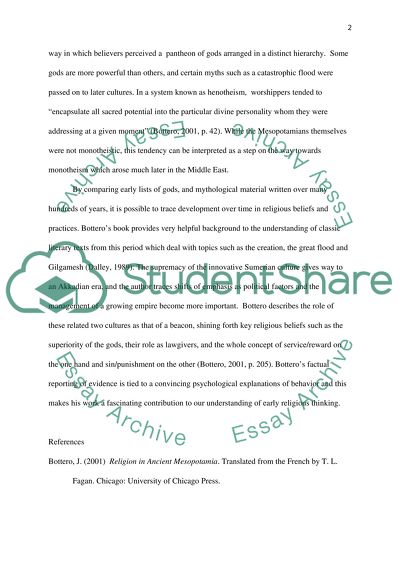Religion in Ancient Mesoptamia Book Report/Review. Retrieved from https://studentshare.org/religion-and-theology/1587816-religion-in-ancient-mesoptamia
Religion in Ancient Mesoptamia Book Report/Review. https://studentshare.org/religion-and-theology/1587816-religion-in-ancient-mesoptamia.


